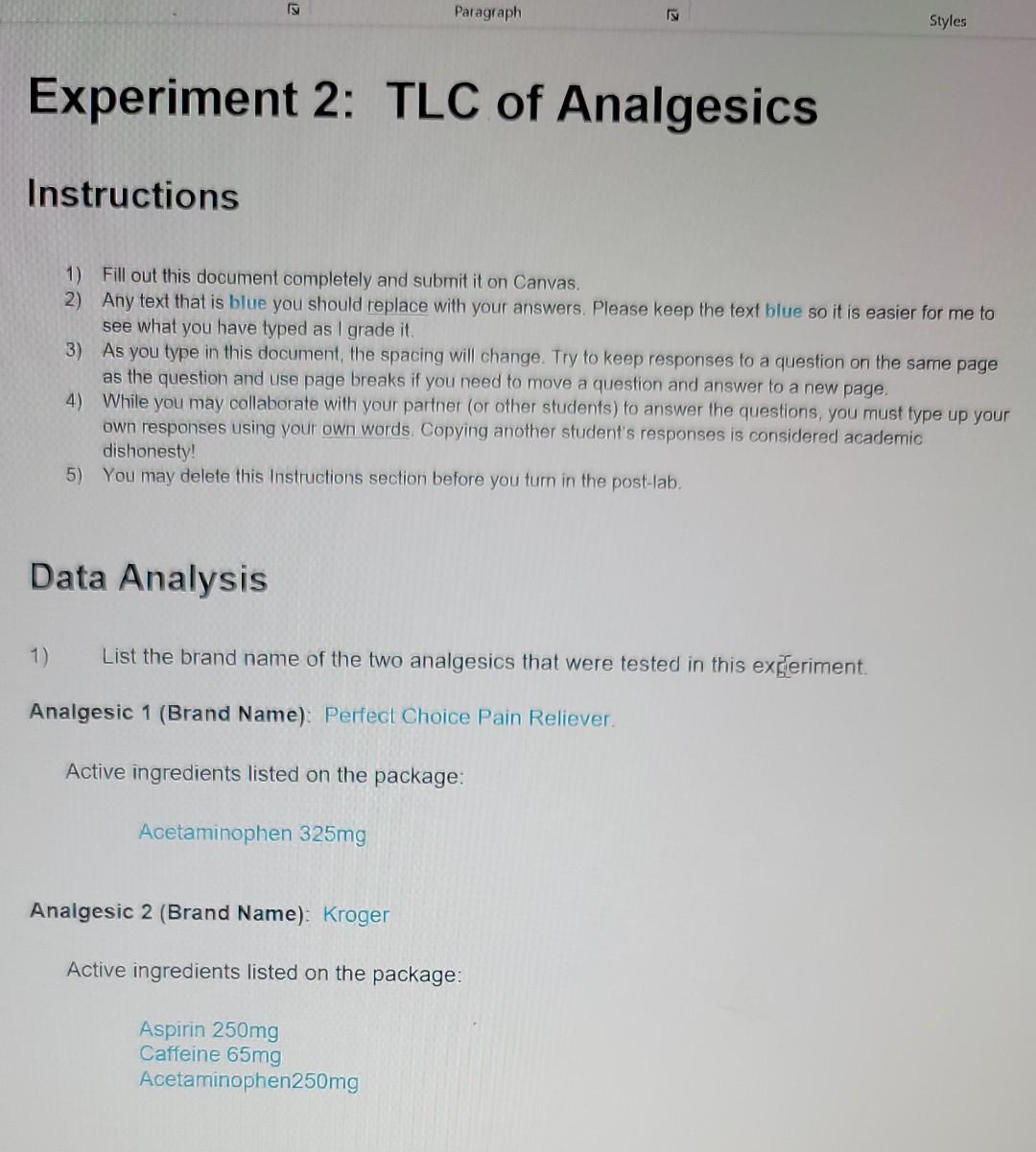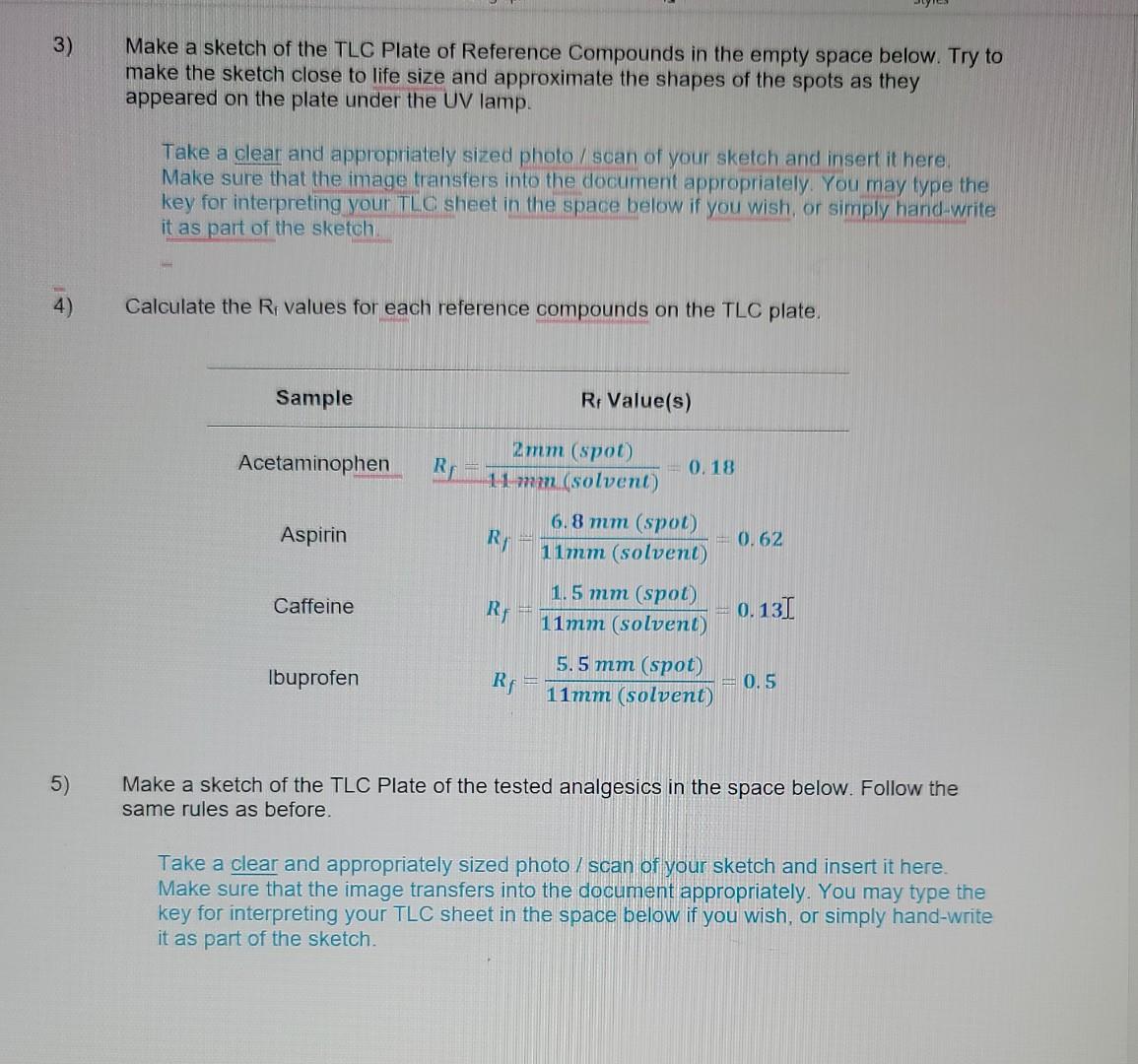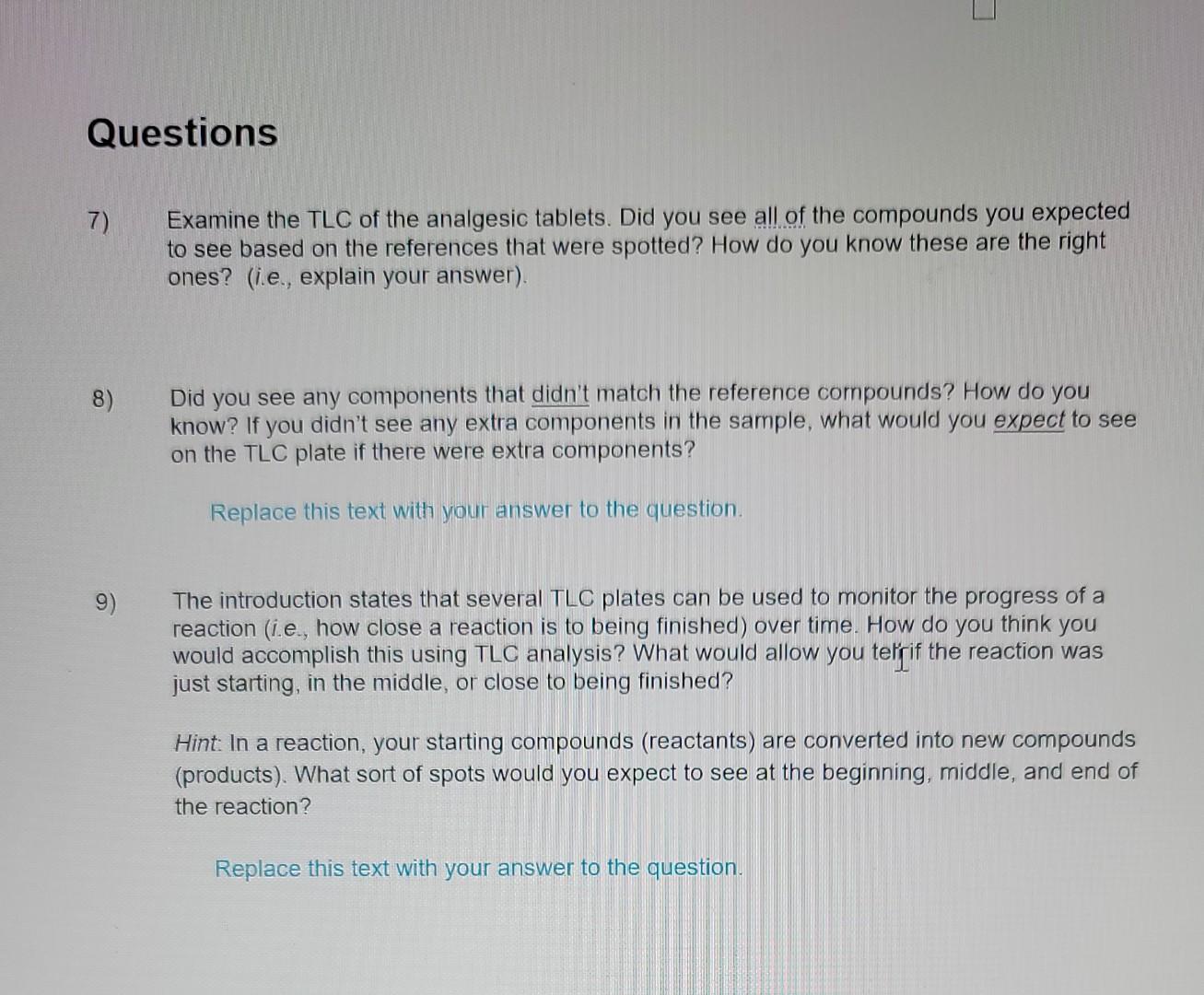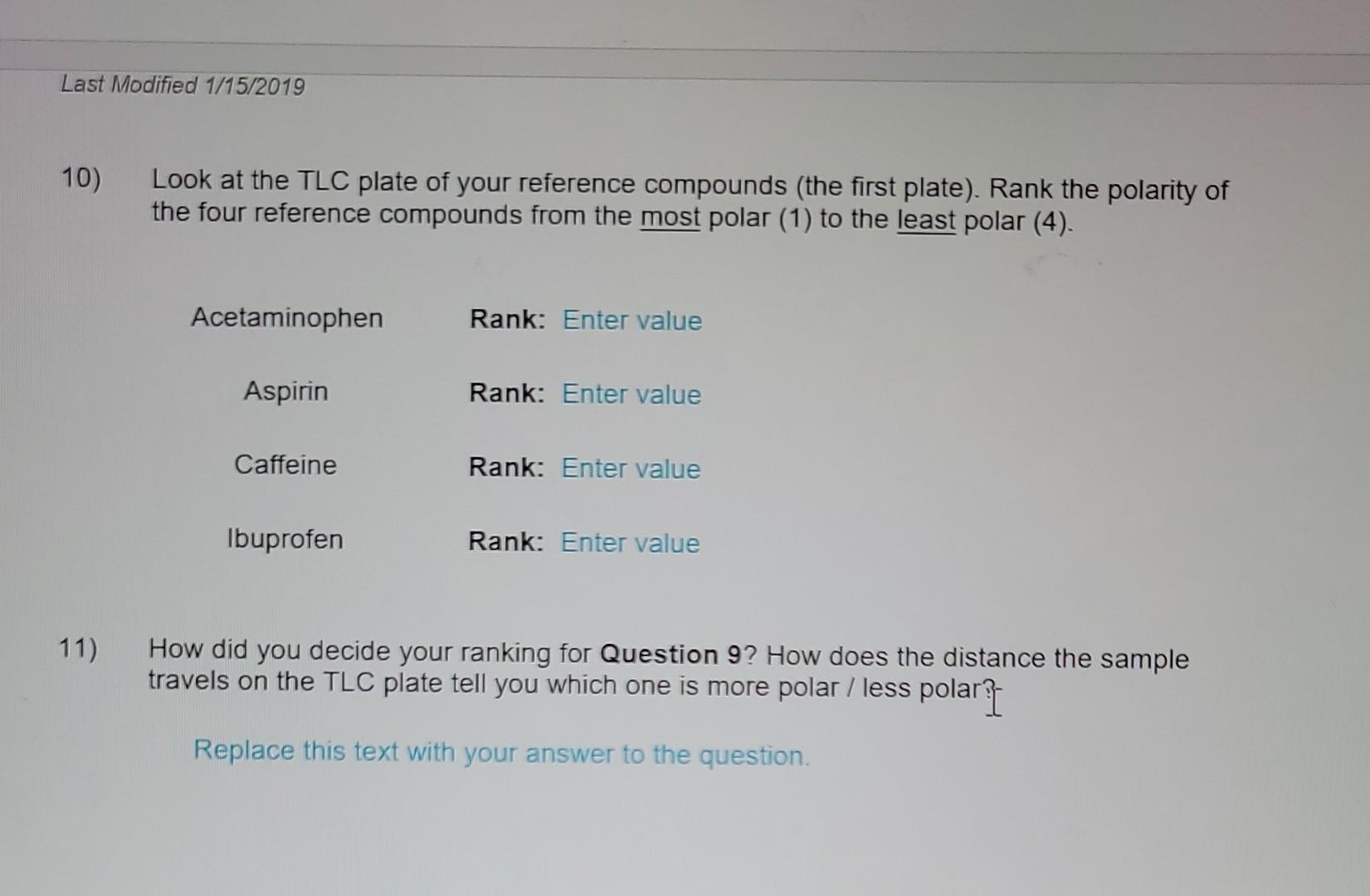Answered step by step
Verified Expert Solution
Question
1 Approved Answer
Paragraph Styles Experiment 2: TLC of Analgesics Instructions 1) Fill out this document completely and submit it on Canvas. 2) Any text that is blue




Paragraph Styles Experiment 2: TLC of Analgesics Instructions 1) Fill out this document completely and submit it on Canvas. 2) Any text that is blue you should replace with your answers. Please keep the text blue so it is easier for me to see what you have typed as I grade it 3) As you type in this document, the spacing will change. Try to keep responses to a question on the same page as the question and use page breaks if you need to move a question and answer to a new page. 4) While you may collaborate with your partner (or other students) to answer the questions, you must type up your own responses using your own words. Copying another student's responses is considered academic dishonesty! 5) You may delete this Instructions section before you turn in the post-lab. Data Analysis List the brand name of the two analgesics that were tested in this experiment. Analgesic 1 (Brand Name) Perfect Choice Pain Reliever. Active ingredients listed on the package: Acetaminophen 325mg Analgesic 2 (Brand Name)Kroger Active ingredients listed on the package: Aspirin 250mg Caffeine 65mg Acetaminophen 250mg 3) Make a sketch of the TLC Plate of Reference Compounds in the empty space below. Try to make the sketch close to life size and approximate the shapes of the spots as they appeared on the plate under the UV lamp. Take a clear and appropriately sized photo / scan of your sketch and insert it here, Make sure that the image transfers into the document appropriately. You may type the key for interpreting your TLC sheet in the space below if you wish, or simply hand-write it as part of the sketch 4 Calculate the Rivalues for each reference compounds on the TLC plate. Sample Rr Value(s) Acetaminophen Aspirin 2 mm (spot) 0.18 R = 11-man (solvent) 6.8 mm (spot) R = 0.62 11mm (solvent) 1.5 mm (spot) Ri 11mm (solvent) 5.5 mm (spot) RE 0.5 11mm (solvent) Caffeine = 0.131 Ibuprofen ) 5) Make a sketch of the TLC Plate of the tested analgesics in the space below. Follow the same rules as before. Take a clear and appropriately sized photo / scan of your sketch and insert it here. Make sure that the image transfers into the document appropriately. You may type the key for interpreting your TLC sheet in the space below if you wish, or simply hand-write it as part of the sketch. Questions 7) Examine the TLC of the analgesic tablets. Did you see all of the compounds you expected to see based on the references that were spotted? How do you know these are the right ones? (ie, explain your answer). 8) Did you see any components that didn't match the reference compounds? How do you know? If you didn't see any extra components in the sample, what would you expect to see on the TLC plate if there were extra components? Replace this text with your answer to the question. 9) The introduction states that several TLC plates can be used to monitor the progress of a reaction (ie, how close a reaction is to being finished) over time. How do you think you would accomplish this using TLC analysis? What would allow you terrif the reaction was just starting, in the middle, or close to being finished? Hint: In a reaction, your starting compounds (reactants) are converted into new compounds (products). What sort of spots would you expect to see at the beginning, middle, and end of the reaction? Replace this text with your answer to the question. Last Modified 1/15/2019 10) Look at the TLC plate of your reference compounds (the first plate). Rank the polarity of the four reference compounds from the most polar (1) to the least polar (4). Acetaminophen Rank: Enter value Aspirin Rank: Enter value Caffeine Rank: Enter value Ibuprofen Rank: Enter value 11) How did you decide your ranking for Question 9? How does the distance the sample travels on the TLC plate tell you which one is more polar / less polar Replace this text with your answer to the
Step by Step Solution
There are 3 Steps involved in it
Step: 1

Get Instant Access to Expert-Tailored Solutions
See step-by-step solutions with expert insights and AI powered tools for academic success
Step: 2

Step: 3

Ace Your Homework with AI
Get the answers you need in no time with our AI-driven, step-by-step assistance
Get Started


